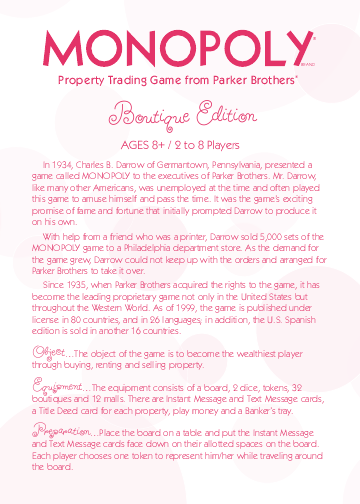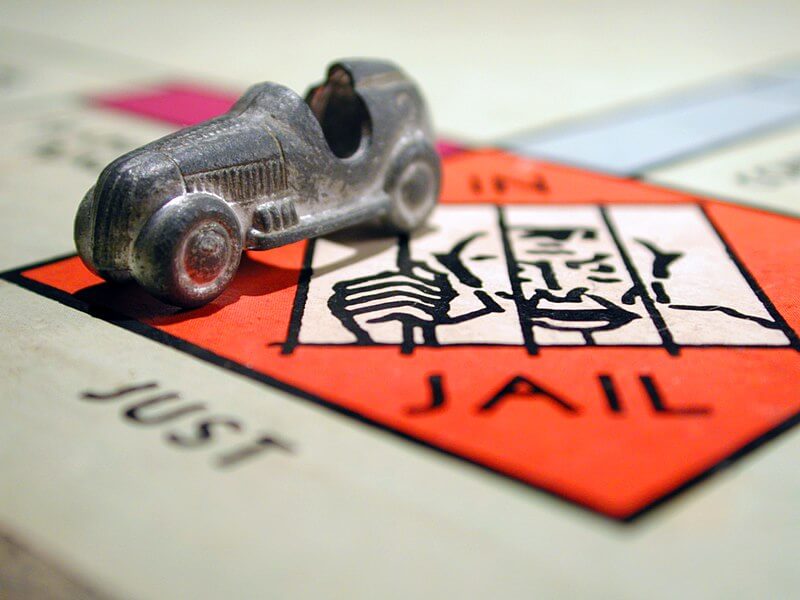

Another is when the player is running low on investment capital. One reason for this is when the property is considered of little value. Sometimes a player will choose not to do so. Typically, most players at the start of the game purchase any property they land on. This is an owner’s income, and therefore is the best way to assure success in Monopoly. The point of Monopoly is to buy as much properties as possible, because this increases the chances of one’s opponents having to pay rent. This price is valued according to the amount of rent one can charge on it.Īfter a property is owned, the owner charges rent for others who land on that space. Each property has its own purchase price. When a player lands on an unowned property, that player has the option to purchase it. At the very least, the banker must be watched carefully. This player has ample opportunity to squirrel away extra money throughout the game, because so much money changes hands. The player who acts at the banker must be trustworthy. This player also makes change for players when they don’t have the exact money.

This player keeps track of the Monopoly money not owned by players. As the name implies, Chance cards can be either positive or negative. Usually, a player gains money or an advantage from such a card. These decks are found in the middle of the board.Ĭommunity Chest generally takes the form of a windfall or subsidy. When someone lands on one of these spaces, that player gets to draw a card from one of these decks of cards. The player is able to charge higher rates if both properties are owned.Īlso on the board are a few spaces named “Chance” and “Community Chest”. If a player buys both of these properties, that player is considered to have a monopoly. For instance, Park Place and Boardwalk are considered to be in the same part of town and are colored with the same royal blue. The properties are divided into sections of town, each with a corresponding color.
#OFFICIAL MONOPOLY RULES FREE#
There are other spaces, which include community properties, as well as the famous corner spaces like Go, Free Parking and Jail. The Monopoly game board is divided into 22 pieces of real estate, along with 4 railroads and 2 utilities (water works and the electric company). Players move the number of spaces which are rolled on the dice. Movement is determined by rolling two dice. These pieces are moved around the board, moving from one space to the next. These pieces are the dog, the top hat, the car, the iron, the thimble, the battleship, the horse (with rider), the boot, the train, the cannon and the wheelbarrow. There originally were only six pieces, but that number has expanded to twelve nowadays. The first decision players make when playing Monopoly is to choose which playing piece to use. These Monopoly instructions are not official, but they don’t deviate from the official Monopoly rules in any way other than the wording.

We’ve provided our own version of the Monopoly rules below. The Guiness Book of World Records estimates somewhere around half a billion. Parker Brothers claims that over 750,000 million people have played their game. The game has been a favorite of Americans and Englishmen ever since. Marketed in the middle years of the Depression, Monopoly allowed players to pretend to be land developers.

Darrow patented the game, then sold it to Parker Brothers. Their version was probably not standardized, and probably owed a lot of inspiration from The Landlord’s Game. It would appear that college business professors taught the game to their students as a learning tool. He claimed to have created the game himself, but there is evidence that it was being played throughout the Midwest during the twenties. It was sold commercially.Ĭharles Darrow patented the game in 1935. The Landlord’s Game was created by Elizabeth Magie, who hoped to point out the unethical behavior of land grabbing capitalists. It owes inspiration from a popular game of the early 20th century, The Landlord’s Game. It is unknown exactly who created Monopoly. Instead, the game combines the funny elements that characterize many modern board games with the principles of modern capitalism.įrom this perspective, the game captures the spirit of the century in which it debuted. Monopoly is not a realistic simulation of modern business practices. It is a game of economic speculation and investment. Monopoly was the most popular board game of the twentieth century.
#OFFICIAL MONOPOLY RULES HOW TO#
Learning how to play Monopoly was something everyone in my generation did at a very young age. Board Games: Monopoly How to Play Monopoly


 0 kommentar(er)
0 kommentar(er)
